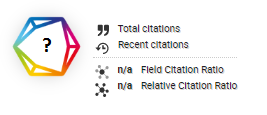ANALISIS EFEKTIVITAS IKLAN LEMBAGA PENDIDIKAN TINGGI MELALUI MEDIA SOSIAL TIKTOK DENGAN PENDEKATAN EPIC MODEL
DOI:
https://doi.org/10.46984/sebatik.v25i1.1173Keywords:
Tiktok, Program Studi, Keunggulan, Daya Tarik , KompetensiAbstract
Penelitian ini bertujuan untuk mengukur efektivitas iklan lembaga pendidikan tinggi di media sosial Tiktok. Objek penelitian adalah lembaga pendidikan tinggi yang melakukan promosi di media sosial Tiktok. Penelitian ini menggunakan pendekatan EPIC Model, variabel-variabel yang diukur adalah empathy, persuasion, impact dan communication. Variabel-variabel yang berkontribusi positif pada efektivitas iklan lembaga pendidikan tinggi di media sosial Tiktok adalah persuasion (3,87), impact (4,04) dan communication (3,65). Program studi, keunggulan lembaga pendidikan tinggi dan program studi, kompetensi lulusan menjadi stimulus untuk menentukan pilihan. Kejelasan informasi, desain konten dan slogan hal yang harus diperhatikan pada komunikasi periklanan. Variabel empathy memberikan kontribusi cukup (3,355) pada efektivitas penayangan iklan lembaga pendidikan tinggi di media sosial Tiktok. Faktor yang mendasari yaitu adanya mitos beranggapan bahwa iklan berpotensi menghabiskan kuota internet, takut tertipu dan iklan tidak sesuai dengan produk yang di iklankan. Nilai EPIC rate pada keempat dimensi adalah 3,73 yang berarti efektif. Kontribusi terbesar yang mempengaruhi efektifitas iklan lembaga pendidikan tinggi pada media sosial Tiktok adalah IMPACT. Tiktok merupakan salah satu new media yang efektif untuk mendukung keberhasilan program pemasaran.
References
https://doi.org/10.21107/jsmb.v6i2.6689
Bestriandita et al. 2017. Analisis Perbandingan Efektivitas Iklan Menggunakan EPIC Model Terhadap Mahasiswa UII Yogyakarta. Seminar Nasional Integrasi Matematika Dan Nilai Islami), 1(1), 214–220.
Essraningtiyas, M., Kusyanti, A., & Herlambang, A. D. (2017). Iklan Online di Media Sosial: Risiko dan Kepercayaan Pengguna terhadap Iklan Online di Line@ dengan Metode Structural Equation Modelling (SEM) Studi Kasus: Line@ Berrybenka. Jurnal Pengembangan Teknologi Informasi dan Ilmu Komputer e-ISSN, 2548, 964X.
Hamdan, N. 2019. Pengguna-Instagram-Di-Indonesia-Terbesar-Ke4-Dunia
https://www.tagar.id/pengguna-instagram-di-indonesia-terbesar-ke4-dunia
Harususilo, Yohanes Enggar, 2020. Setelah-Tvri-Tiktok-Bisa-Jadi-Media-Alternatif Pembelajaran-Siswa
https://www.kompas.com/edu/read/2020/05/07/104106471/setelah-tvri-Tiktok-bisa-jadi-media-alternatif-pembelajaran-siswa?page=all
Indah, D. R. & Maulida, Z. 2017. Analisis Efektivitas Iklan Media Televisi Mengunakan EPIC Model (Studi Kasus Produk A Mild di Kota Langsa). Jurnal Penelitian Ekonomi Akuntansi (Jensi), 1(2), 137–149.
Indrawati, K. A. P., Sudiarta, I. N., & Suardana, I. W. 2017 Efektivitas iklan melalui media sosial facebook dan instagram sebagai salah satu strategi pemasaran di krisna oleh-oleh khas Bali. Jurnal Analisis Pariwisata, 17(2), 78-83.
Kasanova, R. 2016. PENGGUNAAN TEKNIK PERSUASIF DALAM IKLAN Ria Kasanova Abstrak. Jurnal Ilmu Bidang Bahasa Dan Sastra Indonesia,1(2),1–10. http://ejournal.unira.ac.id/index.php/jurnal_komposisi/article/view/122
Massie, A. 2020. Kehadiran TikTok di Masa Pandemi (The Presence of TikTok in the Pandemic).
Nabila, N. M. & Sastika,, W. 2018. Efektivitas iklan jne melalui media sosial instagram menggunakan metode epic (empathy, persuasion, impact, dan communication) kota Bandung tahun 2018 effectiveness of jne advertising through social media instagram using epic method ( empathy , persuasion , impact , and communication ) bandung CITY IN 2018. 4(3), 950–958.
Pancaningrum, E., & Rahayu, W. A. (2017). The Effectiveness of Facebook as an Advertising Strategic Method Using EPIC: A Case Study of Mie Jupe Jombang. Chinese Business Review, 16(7), 309-315.
Purba, Gervin Nathaniel, 2020. Adaptasi-Teknologi-Kemendikbud-Manfaatkan Tiktok-Dalam-Pendidikan-Karakter-Anak
https://www.medcom.id/pendidikan/news-pendidikan/8KylXZXk-adaptasi-teknologi-kemendikbud-manfaatkan-Tiktok-dalam-pendidikan-karakter-anakHasanah,
Rakhmayanti, Intan, 2020. Pengguna-Tiktok-Di-Indonesia-Didominasi-Generasi-Z-dan Y
https://tekno.sindonews.com/berita/1523692/207/pengguna-Tiktok-di-indonesia-didominasi-generasi-z-dan-y#:~:text=JAKARTA%20%2D%20Pengguna%20Tiktok%20di%20Indonesia,rentang%20usia%2014%2D24%20tahun. Intan Rakhmayanti
Santoso, E. D., & Larasati, N. 2019. Benarkah Iklan Online Efektif Untuk Digunakan Dalam Promosi Perusahaan. Jurnal Ilmiah Bisnis Dan Ekonomi Asia, 13(1), 28-36.
Saraswati, A., Pradekso, T., Setyabudi, D., & Rakhmad, W. N. (2014). Analisis Faktor-Faktor Yang Menyebabkan Iklan Pop-Up Dihindari. Interaksi Online, 2(3).
Sastika, W. 2018. Epic Model: Pengukuran Efektivitas Iklan Kuliner Melalui Sosial Media Instagram @Kulinerbandung Sebagai Media Promosi. JTIM - Jurnal Teknologi Informasi & Manajemen, 1(01), 21. https://doi.org/10.25124/jtim.v1i01.1531
Sugiyono. 2017. Metode penelitian bisnis (S. Y. Suryandari (ed.); edisike-3). ALFABETA, CV JL. Gegerkalong Hilir No. 84 Bandung.
https://www. cvalfabeta.com
Suryaningsih, I. B & Nugraha, K. S. W. 2018. Epic Model: Efektivitas Iklan Destinasi Wisata Kabupaten Banyuwangi Terhadap Minat Berkunjung Ulang Wisatawan Domestik. Managament Insight: Jurnal Ilmiah Manajemen, 13(2), 8–16. https://doi.org/10.33369/insight.13.2.8-16
Tech - CNBC Indonesia TV, 2020. Demam-Titktok-Tiktok-Indonesia-Pengguna-Ri-Sangat-Kreatif
https://www.cnbcindonesia.com/tech/20200306133333-39-142993/demam-titktok-Tiktok-indonesia-pengguna-ri-sangat-kreatif
Tekno & Sains, 2020. Ini-Asal-Muasal-Tiktok-Yang-Kini-Mendunia.
https://kumparan.com/berita-hari-ini/ini-asal-muasal-Tiktok-yang-kini-mendunia-1ss18QadAEN/full
Downloads
Published
How to Cite
Issue
Section
License
Authors retain all their rights to the published works, such as (but not limited to) the following rights; Copyright and other proprietary rights relating to the article, such as patent rights, The right to use the substance of the article in own future works, including lectures and books, The right to reproduce the article for own purposes, The right to self-archive the article








